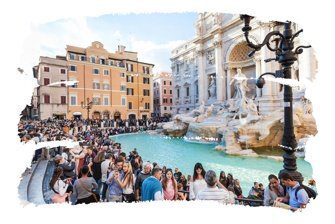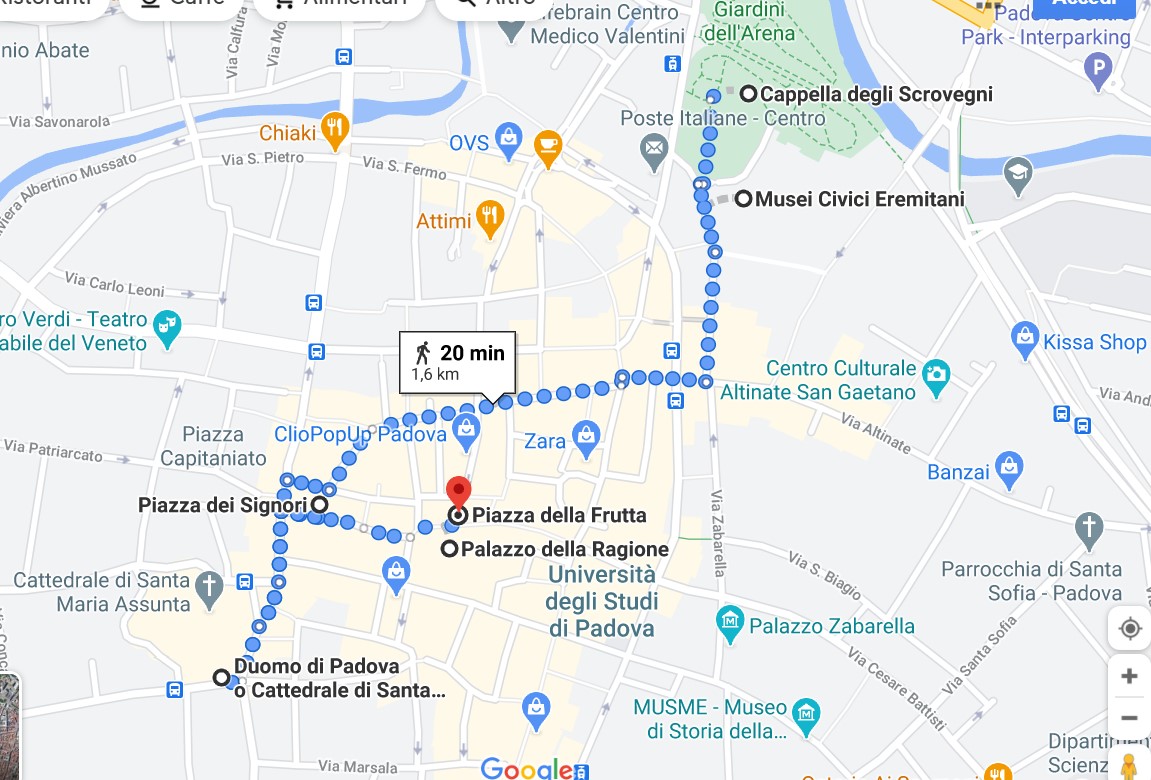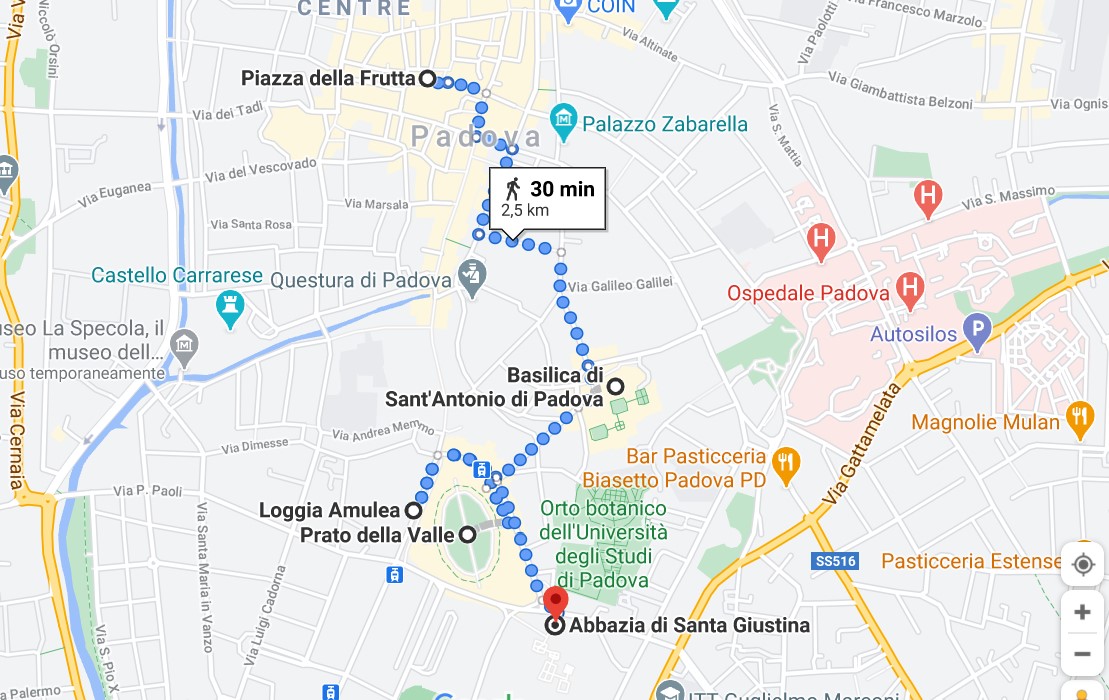What to see in Padua?
Why visit the city of Padua? Italy is a country rich in cities of great historical and environmental interest. After the colonization of the various peoples that succeeded on the Peninsula, the monumental beauty and the art that the whole world envies has been preserved. Among those cities that deserve a look due to their richness in history, culture and beauty, both natural and artistic, is the city of Padua. So, what to see in Padua? Here at Your Travel to Italy with Ana Patricia you make the trip of your dreams!!! ALSO: see our “Accommodation in Italy – Tips for your holidays!”
(Fonte: Cretanis)
Introduction
A city that has many attractions, often little known. Apart from the Scrovegni Chapel, in which Giotto painted one of his masterpieces, few know all the museums, gardens, churches and monuments that Padua gives us. That’s why its discovery can be a pleasant surprise. The reasons why you choose to go to this city are these and so many others that we will analyze in detail below. Also read What to visit in one day in Padua?
Reasons to visit Padua?
The first reason is, definetely, that Padua is one of the most beautiful Italian cities of art. An ancient city, the birthplace of universities and companies, which has always had a focus on art, culture and science. A city that you can explore on foot or by bicycle, with calm and curious eyes, because it has so many attractions, often unknown. In fact, in addition, the Scrovegni Chapel, in which Giotto painted one of his masterpieces.
Giotto’s Frescoes, Historical Museums, Old Town Center
Choosing to visit it means going through classic itineraries with Giotto’s frescoes, historic museums, the center of the old city with its charming and institutional buildings, as well as churches and monuments scattered with a sense of history and culture. Then there are the shops, markets and residents, sparkling vitality and hectic modern life. The only thing missing is to begin to discover Padua, which is now known as the city of the three “without”; in fact, it is the city of three unnamed Saints, because the Basilica of Saint Anthony of Padua is simply called “the Saint”. Then there is the meadow, without grass, in the sense that the most beautiful square in Padua, called Prato della Valle (“Valley’s Meadow”), was a marshy area, so from then on, the meadow without grass. Find out here Where to sleep in Padua?
Café without Doors, reference to the Historic Caffè Pedrocchi
Finally, there is the ‘café without doors’, a reference to the historic Caffè Pedrocchi that until 1916 remained open day and night and, therefore, called without doors. There would be a fourth “without”, but it is unknown to many in Padua. It refers to the “Bo without stable” palace, the home of the University, which took its name from an old inn, located nearby, and which was called Locanda del Bove, with a sign that had an ox skull. So being a construction and not an animal, here we are talking about Bo without a stable. In any case, we will try to do our best to see the monuments and places of interest to get acquainted with the city and maybe come back for other deeper visits.
4) What to see in Padua? OLD COURTYARD
Of great architectural interest is the Patio Antigo, by Andrea Moroni, although the historical excellence is the Hall of Forty. They keep there the chair of the master Galileo, who taught in Padua from 1592 to 1610, the Aula Magna, full of coats of arms and decorations and the famous anatomical theater of G.F. d’Acquapendente, the oldest permanent anatomical theater in the world.
5) What to see in Padua? BASILICA OF ST ANTHONY AND ORATO DELLA VALLE
As a conclusion of this tour of Padua, it is necessary to visit the Basilica of St Anthony and the end of the Prato della Valle. We then start from the rich religious heritage of the city of Padua, strongly imbued with the intense spiritual presence of one of the most beloved saints in the world, St. Anthony.
About Santo Antonio di Padova
A faith that was formed with great artistic fervor, leaving in Padua wonderful works, treasures of art of all times, and one of these treasures is certainly the Basilica of Saint Anthony, better known as the Basilica of the Saint, a majestic religious building and complex, started in 1232, a year after his death. The external appearance of the Basilica is a mixture of Lombard, Tuscan and Byzantine art; in the south, there are eight domes and two bell towers. For art lovers, Donatello’s masterpieces, such as the equestrian statue in the square and the altar in the basilica, are unmissable.
About the Prato della Valle Square
A few meters from the Basilica, there is the Prato della Valle Square, one of the most beautiful squares in the world, well, it is said to be one of the largest in Europe. It is one of the most active and vital places in Padua, frequented by its residents, who use it for walking, skating, for moments of rest and sun on this monumental lawn in the city. The square is often used for events and shows and is a great venue for traditional New Year and Ferragosto fireworks. (Hottest day of the year celebrated in August in Italy).
After a long period of decline in the eighties, this square underwent a revitalization process that made it again one of the city’s gems. The seventy-eight statues that adorn the great green island, surrounded by a water channel, honor famous people who were born or lived in Padua, many of whom are still popular today, such as the mythical founder of the city, Antenor, the poet Torquato Tasso, or the scientist Galileo Galilei.
What to see in Padua?
Watch this video and learn: What is the average cost of a day in Italy?
Subscribe to our channel and receive more videos with information and tips about Italy. Don’t forget to leave that Like;)
Conclusion
What to see in Padua? Padua keeps kilometers of walls narrating where light and color come together and manage to create extraordinary stories. The city, with its more than 3,000 years of history, has inherited a wealth of historical and artistic monuments that can offer real themed itineraries. Today, the route was classic and I think you had the answer as to why visiting a city as beautiful as Padua, undoubtedly fascinating and memorable.
If you feel insecure, have no time, and need help to organize your trip, don’t hesitate to contact me! I will love to help you make your dream trip to Italy come true. And how can I do that? Keep reading this post until the end and you will understand how we make your life and your trip much easier.
Did my post help you? If so, be sure to post your comment below, but if you still have questions just send me a message I will answer you as soon as possible!
An Extra Help for your Trip
The best content from Your Travel to Italy!
Learn more about our tours in Italy right now!
- What to visit in Italy in 10 days?
- The ten must-see places in Tuscany?
- The best tips to save on your trip to Italy?
- What are the 10 most visited cities in southern Italy?
- Airports in Italy? How to get to your hotel? (Venice, Milan, Rome, Florence)
- What to do in 1/2/3/4 days in the main Italian cities?
- The best tips on food in Italy (wines, typical food, enogastronomy tours)
- How to get from Fiumicino Airport to Rome downtown?
- Your Travel to Italy: 10 tips for traveling through Italy!
Best regards from Italy





 Save money!
Save money!